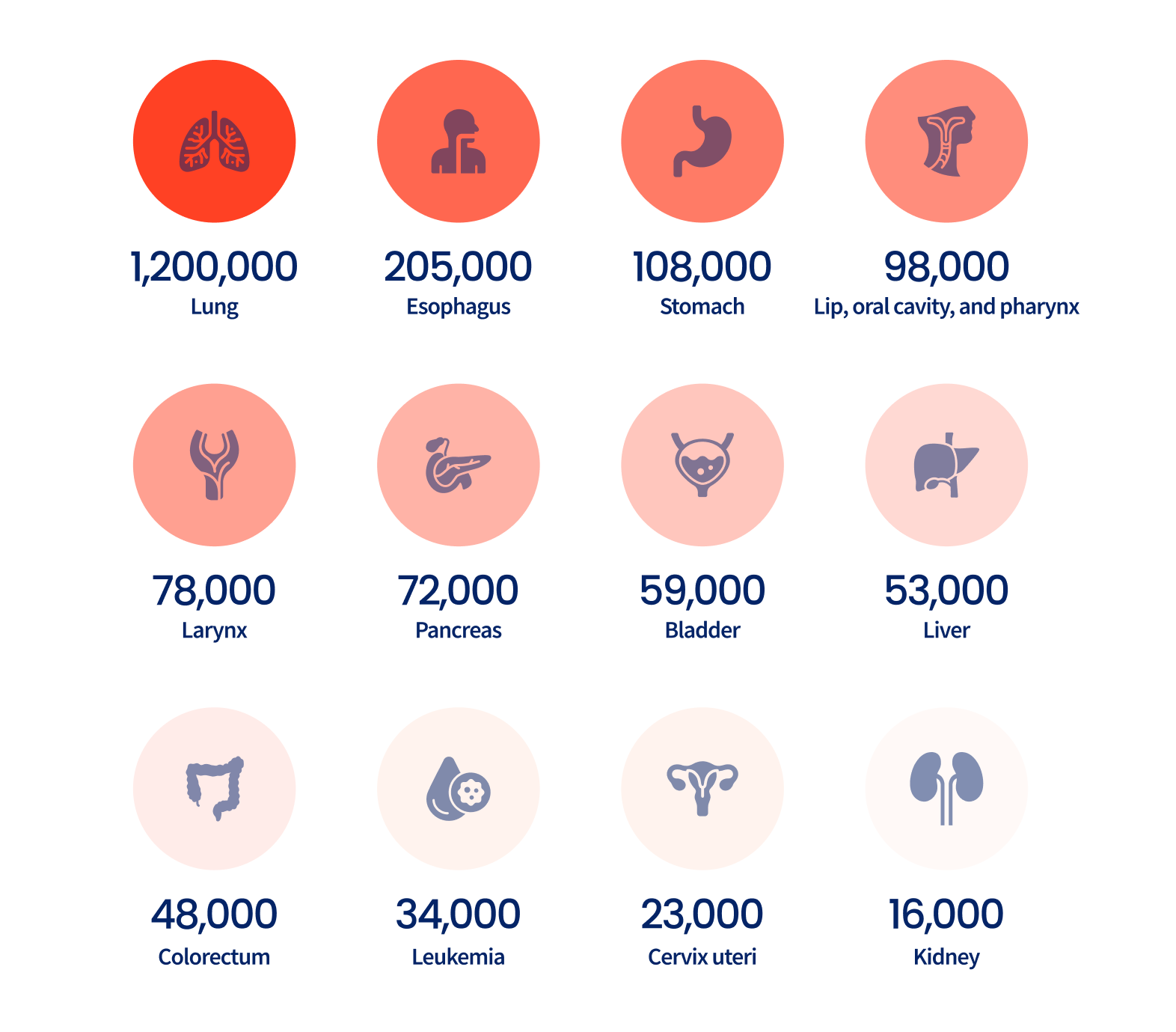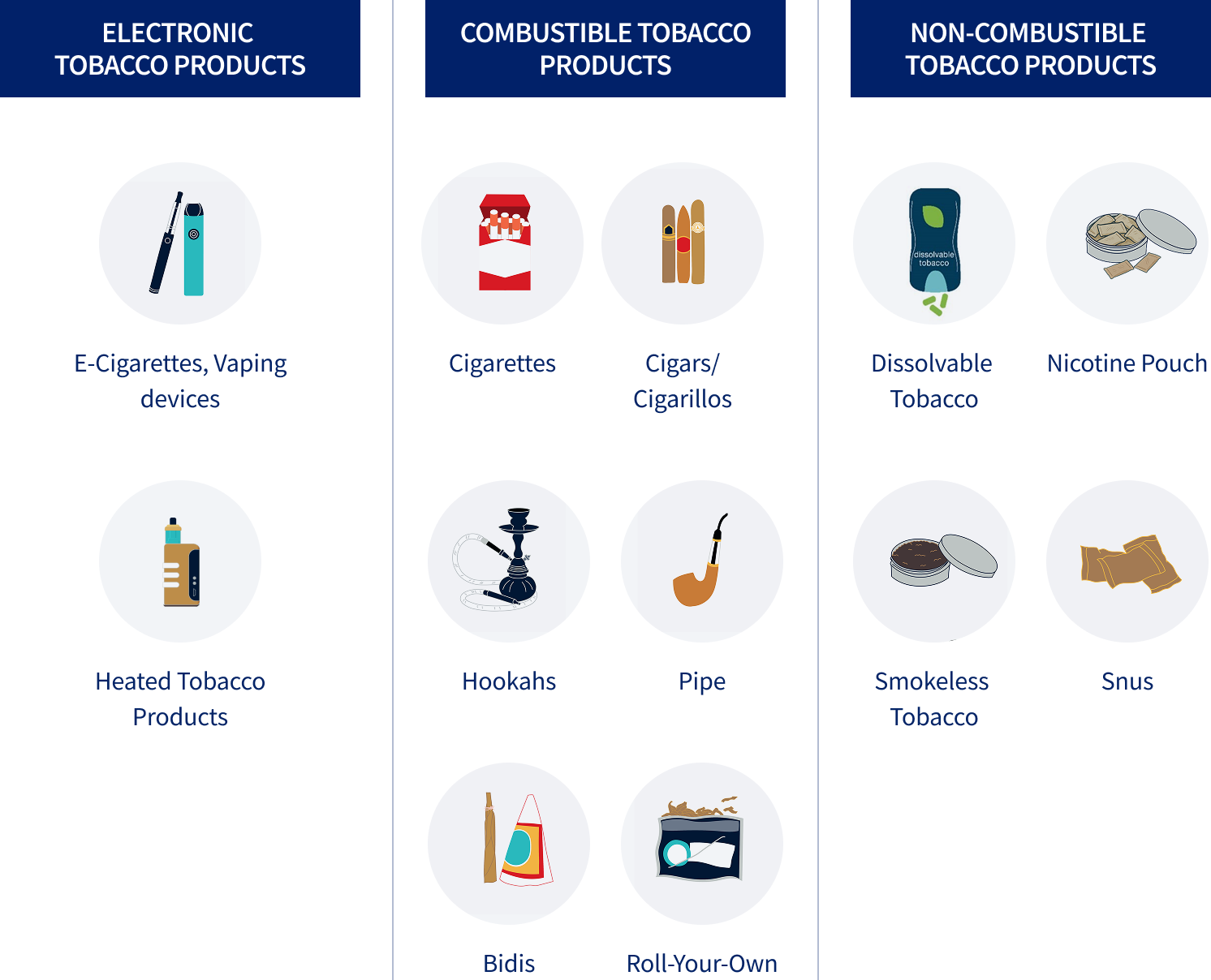Tobacco
Tobacco causes over 8 million deaths annually, including an estimated 1.3 million deaths in non-smokers who are exposed to second-hand smoke.
Tobacco products cause at least 17 forms of cancer, and are collectively responsible for over 2 million cancer deaths per year (Figure 4.1).
Number of yearly cancer deaths attributable to tobacco smoking, 2021

Footnote
Smoking also causes cancers of the nasal cavity, paranasal sinuses and ovary (mucinous).
Approximately 1.25 billion people use tobacco products worldwide, most of whom smoke cigarettes (Map 4.1).
Other commonly used tobacco products known to cause cancer include smokeless tobacco, bidis, kreteks, pipes, and cigars (Figure 4.2).
Different types of tobacco products

Globally, one in three oral cancer cases are linked to the use of smokeless tobacco or areca nut. Additionally, hookah (waterpipes) is considered a potential cause of cancer. While concerning, the health effects of emerging tobacco products including e-cigarettes, heated tobacco, and nicotine pouches are not well understood. Use of these products, particularly e-cigarettes, is increasing worldwide (Figure 4.3), especially among youth (see Tobacco Control, Figure 34.4). Concurrent use of two or more products is also increasingly common.
An estimated 68 million people worldwide used e-cigarette in 2020.
Projected changes in global number of e-cigarette users, 2012 and 2020
Footnote
The projection was based on the Global Number of Vapers Estimation from June 2020 and STATISTA data on global revenues in the e-cigarette market from May 2020 assuming at 93% linear relationship between the value of the e-cigarette market and the number of users.
Considerable disparities in the cancer burden caused by smoking exist between and within countries and by sex. Exposures to secondhand smoke also cause cancers among nonsmokers, who are disproportionately women living in low- and middle-income countries (LMICs). Progress in tobacco control in many high-income countries has substantially reduced mortality rates of lung (see Lung Cancer) and other smoking-related cancers. Yet in such settings, lung cancer remains the leading cause of cancer death, reflecting a higher smoking prevalence decades ago.
“No single measure is known that would have as great an impact on the number of deaths attributable to cancer as a reduction in the use of tobacco.”
An estimated 80% of tobacco users live in LMICs. As a substantial percentage of teenagers in LMICs are current tobacco users (Figure 4.4), the number of cancer deaths caused by tobacco products is projected to increase substantially over the course of this century. Thus, comprehensive tobacco control is urgently needed in LMICs, including full implementation of the World Heath Organization MPOWER measures (see Tobacco Control) and consideration of “Endgame Strategies”. In addition to preventing initiation, support for tobacco cessation is an essential component of these efforts as cessation dramatically reduces cancer risks.